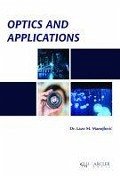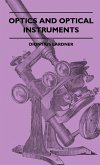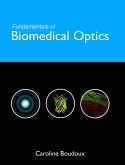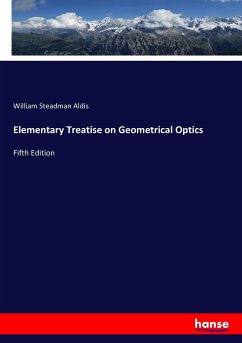Optics and Application deals with the applicative aspects of optics and optical phenomena with its main emphasis on applying the optical knowledge onto solving the real engineering problems. The book is aimed toward undergraduate and graduate students who want to broaden their knowledge of optics to the real life engineering problems as well as to the engineers who want to acquire the basic principles of optics.The book is arranged in a way which leads the reader toward better understanding of optical phenomena and their applications. Basic tools and concepts are presented in the earlier chapters, which are then developed more and applied in the later chapters. The book is organized in nine chapters covering broad range of optical phenomena.Chapter 1 gives a brief historical overview of optical phenomena perception. Although the light and light related phenomena have always been a source of immense curiosity for ancient peoples, one had to wait until the late eighteenth century and the Maxwell's classical electromagnetic theory in order to conceive most principles of modern opticsChapter 2 introduces the radiometry as the substantial part in the field of optical measurement and engineering together with its measurement techniques for measuring optical power and its spectral content.Chapter 3 describes the light propagation in terms of rays within the geometrical optic framework of treating the optical phenomena. The geometrical optics represents a cornerstone for designing many optical instruments such as telescopes, microscopes, etc.Contrary to the Chapter 3, where light propagates in a form of a simple beam, Chapter 4 takes into account the wave nature of light thus introducing the corresponding interference phenomena. Being inherently short wavelength electromagnetic wave the interference of light gives a rise of highly sensitive measurements of many physical quantities, which are also presented in this chapter.Chapter 5 further develops the wave based phenomena of light such as diffraction.Chapter 6 introduces the holography and the practice of making holograms. A hologram is a photographic recording of a light field, rather than of an image formed by a lens. The hologram is used to display a fully three-dimensional image of the holographed object.Today's state-of-the-art communication systems are unimaginable without optical fibers. Therefore, Chapter 7 is devoted to the optical fibers and their use in the communication as well as in the highly sensitive versatile measurement systems.Chapter 8 deals with the polarization phenomena of light and introduces a simple mathematical formalism in order to determine the polarization state of light.Last but not least Chapter 9 shows how the light can be detected. Although in the past times human eye was used exclusively as an optical detector, in order to objectively measure the intensity of a light in modern optical systems a solid-state detector has been usually used.
Hinweis: Dieser Artikel kann nur an eine deutsche Lieferadresse ausgeliefert werden.
Hinweis: Dieser Artikel kann nur an eine deutsche Lieferadresse ausgeliefert werden.








